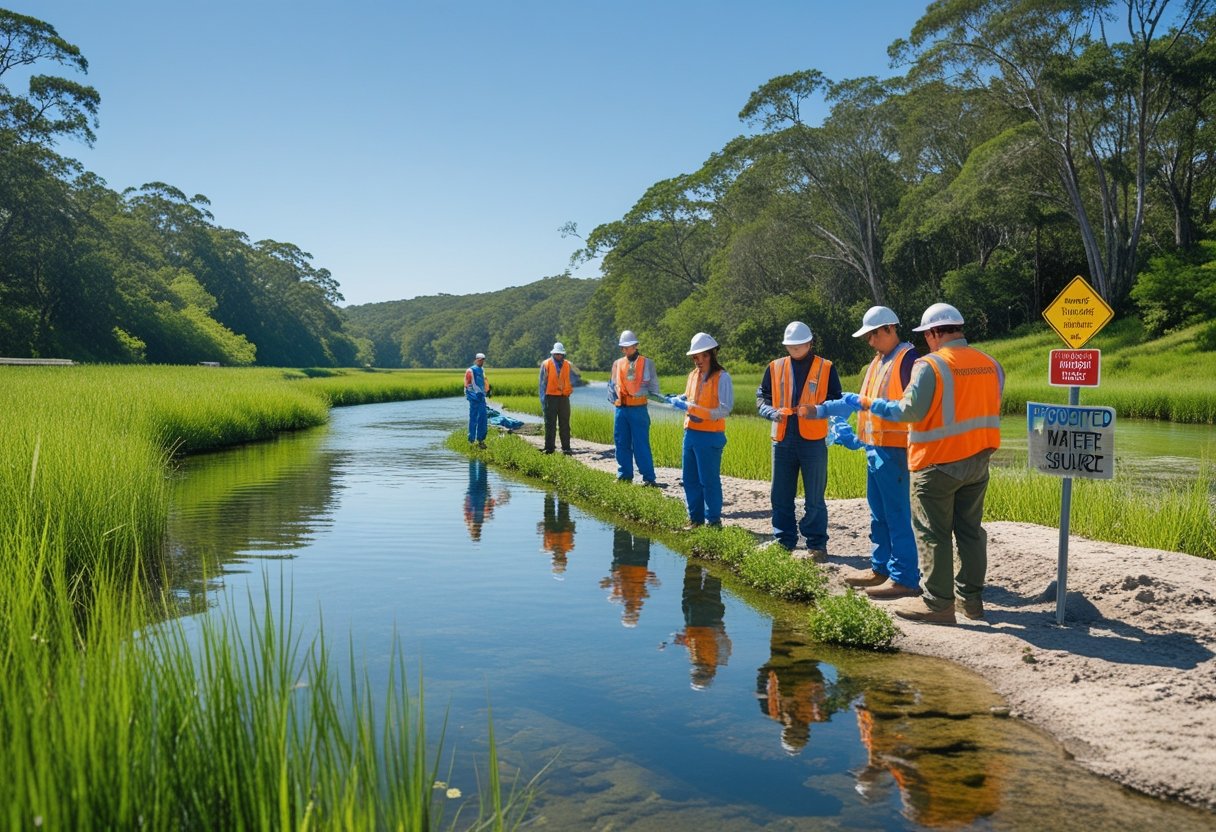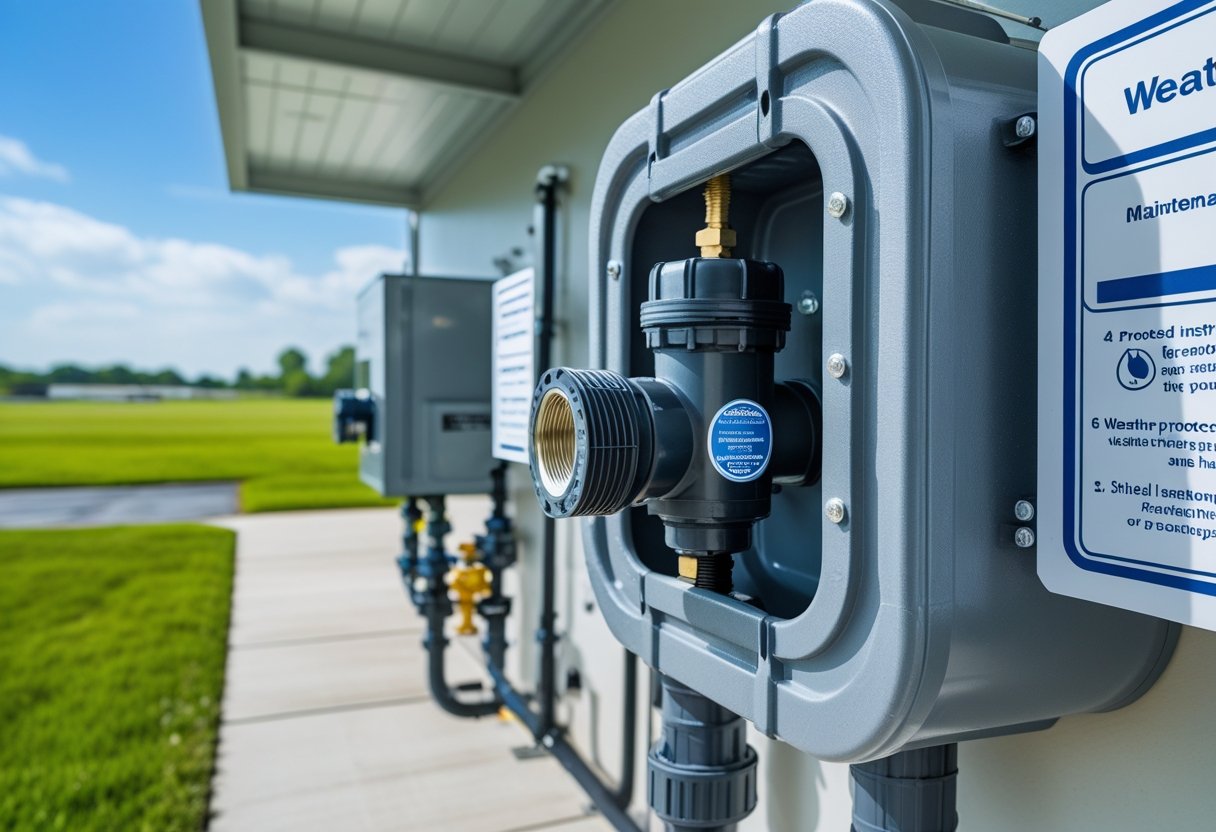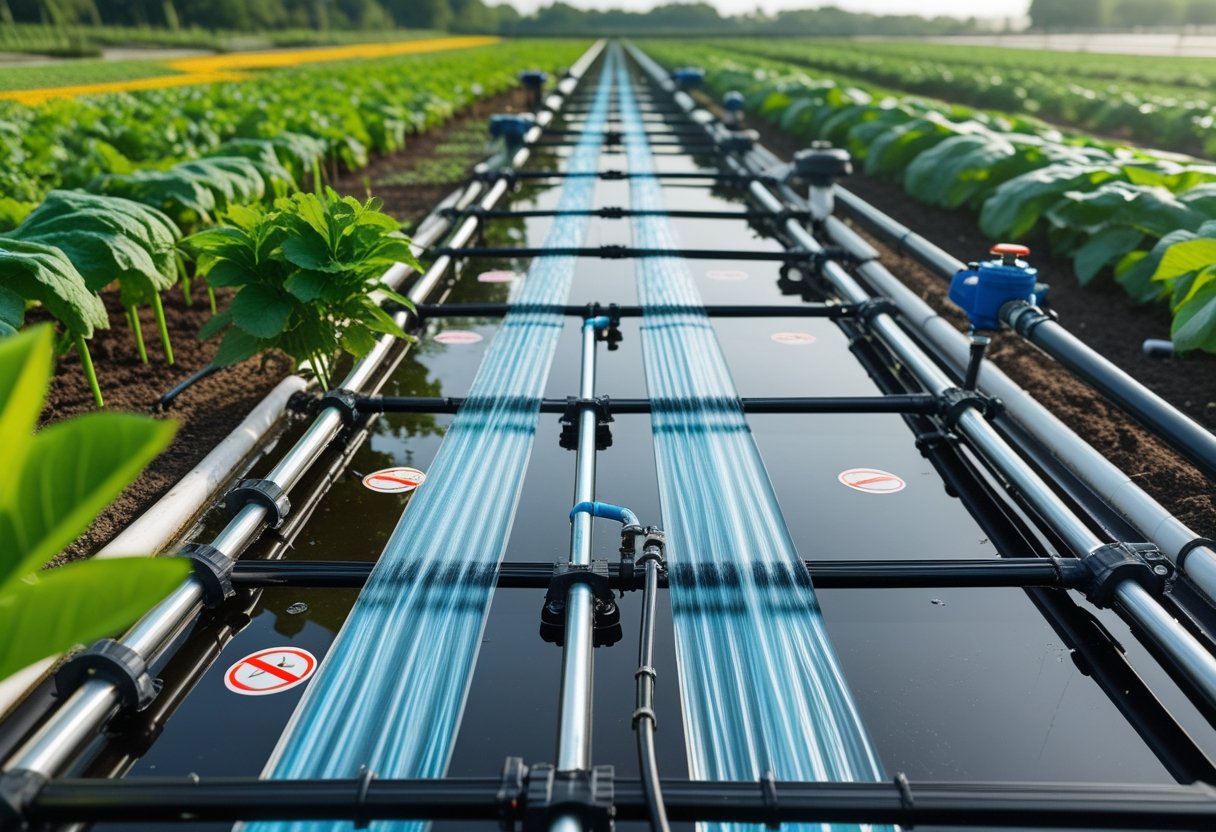Backflow prevention is a crucial aspect of residential plumbing that safeguards your home's water supply from contamination. Understanding how backflow preventers work and why they're essential will empower you to protect your family's health and comply with local regulations. When wastewater flows back into clean water lines, it can lead to serious health hazards and costly repairs.
As a homeowner in San Diego, it's vital to have reliable backflow prevention systems in place. At Pacific Backflow, we offer comprehensive backflow services, including testing, repairs, and installations. Our experienced technicians ensure that your systems not only function correctly but also meet the stringent requirements set by local authorities.
Regular testing can catch potential issues before they develop into major problems. By choosing Pacific Backflow, you can trust that your backflow prevention devices are in capable hands, ensuring your home's water remains clean and safe for your family.
Understanding Backflow in Residential Plumbing
Backflow in residential plumbing can pose serious risks to your health and safety. It involves the unwanted reversal of water flow, which can lead to contamination. Understanding the causes and implications of backflow is essential for maintaining a safe water supply in your home.
What Is Backflow?
Backflow is the undesirable reversal of flow in a plumbing system, which can happen when pressure changes occur. For instance, a drop in pressure can cause non-potable water to flow into the potable water supply. This can introduce harmful contaminants into the drinking water, compromising public health. Backflow can stem from various sources, including faulty fixtures or unprotected cross-connections in your plumbing system. If there’s a backflow incident, it is crucial to address it promptly to avoid health risks.
Risks and Hazards of Backflow
The presence of backflow can lead to dangerous health hazards. Contaminated water may carry pathogens, chemicals, or toxins, putting you and your family at risk. Common contaminants include bacteria, pesticides, and heavy metals. These substances can cause waterborne illnesses and even long-term health problems. The consequences of backflow extend beyond personal health, potentially resulting in costly damage to your plumbing system. Ensuring that your plumbing is properly equipped to prevent backflow is critical for safeguarding your home's water supply.
How Cross-Connections Occur
Cross-connections are a primary cause of backflow. A cross-connection occurs when a potable water supply is linked to a non-potable source, such as irrigation systems or industrial applications. If a pressure change occurs, it can draw contaminated water into your clean water supply. Common examples include garden hoses submerged in stagnant water or connections between your home’s plumbing and septic systems. Regular inspections can help identify and eliminate potential cross-connections. To protect your home, consider contacting professionals like Pacific Backflow, who specialize in reliable backflow prevention services. Proper installation of backflow preventers and adherence to safety regulations is essential in preventing these issues.
Types of Backflow Prevention Methods
Backflow prevention methods are essential to safeguard your residential plumbing system. This section details various techniques to prevent contaminated water from entering your clean water supply. Understanding these methods helps you make informed decisions for your home.
Air Gap Separation
An air gap is the most straightforward and reliable method of backflow prevention. It involves a physical distance between the end of a water supply line and the water level in a receptacle. This gap prevents any backflow from occurring since there’s no direct connection for water to travel back into the system.
To install an air gap, ensure that the distance meets local codes, which typically require a minimum of 1 inch. Air gaps can be found in applications like faucets and wastewater drains. Neglecting to maintain this gap may compromise your drinking water, so regular inspections are crucial for ensuring compliance.
Vacuum Breakers
Vacuum breakers are devices designed to prevent backflow by creating a barrier that stops the reverse flow of water. They work by allowing air into the system when there's a drop in water pressure, breaking any potential vacuum that could siphon contaminants back into your clean water supply.
Commonly used in irrigation systems and hose connections, vacuum breakers are engineered to activate automatically during backflow events. Installation is typically straightforward, but it’s essential to ensure they are placed above the highest fixture in your plumbing to be effective and compliant with regulations.
Pressure Differential Devices
Pressure differential devices include pressure vacuum breakers (PVB) and reduced pressure zone assemblies (RPZ). These devices operate by monitoring pressure changes and maintaining a difference in pressure between the supply line and potential contaminants.
PVBs are ideal for low to moderate-risk applications, while RPZ devices offer a higher level of protection for more sensitive situations. Installation of these devices requires knowledge of local plumbing codes and should be performed by certified professionals. Many homeowners in San Diego trust Pacific Backflow for such installations to ensure their systems meet all necessary regulations.
Using these backflow prevention methods can help protect your home’s water supply and ensure compliance with local standards.
Backflow Prevention Devices for Residential Applications
Backflow prevention devices are essential for maintaining the integrity of your potable water system. These devices ensure that contaminated water does not flow back into your clean water supply, safeguarding your health and property. Below are key types of backflow prevention devices suitable for residential applications.
Backflow Preventers for Irrigation Systems
In irrigation systems, backflow preventers protect your water supply from contaminants that could be drawn back into the system during a drop in pressure. Devices like the Pressure Vacuum Breaker (PVB) and the Double Check Valve Assembly (DCVA) are commonly used.
- Pressure Vacuum Breaker (PVB): This device prevents backflow by creating a vacuum that stops contaminants from entering the main water supply. It is ideal for residential irrigation.
- Double Check Valve Assembly (DCVA): The DCVA utilizes two internal check valves to ensure that water flows in a single direction, effectively keeping contaminants out.
These systems require regular testing to ensure their proper function. At Pacific Backflow, you can rely on our experts for regular testing services throughout San Diego County.
Backflow Assemblies for Water Heaters
Backflow assemblies are crucial for water heaters as they protect against potential backflow when the water pressure fluctuates. A common device used in residential water heater systems is the Atmospheric Vacuum Breaker (AVB).
- Atmospheric Vacuum Breaker (AVB): This affordable device offers protection against backflow by using atmospheric pressure to prevent contaminated water from entering your potable system.
Installing and maintaining these backflow preventers is vital for safe water use in your home. Timely inspections and repairs can prevent serious issues related to water quality.
Selecting the Right Backflow Device
Choosing the right backflow prevention device depends on the specific needs of your system and local regulations. Key factors to consider include:
- Type of system: Assess your irrigation or plumbing system's requirements to determine the most suitable device.
- Local codes: Many regions have specific regulations regarding backflow prevention devices. Ensure your choice complies with these codes.
- Installation and maintenance: Opt for devices that are easy to install and maintain. Professional assistance from companies like Pacific Backflow can simplify this process.
Consult with a qualified technician to help you navigate your options and ensure that your backflow prevention devices are appropriately selected and installed.
Installation and Maintenance of Backflow Prevention
Proper installation and maintenance of backflow prevention devices are crucial for safeguarding your residential plumbing system. This section discusses essential practices, including testing, hiring professionals, and routine inspections to ensure your water lines remain safe and compliant with plumbing codes.
Backflow Testing and Certification
Backflow testing is a vital process that assesses the effectiveness of your backflow prevention device. Typically mandated annually, this testing verifies that your system prevents water from flowing backward into the public water supply. Certified technicians perform these tests, identifying any malfunctioning components. If your device fails the test, it may require immediate attention to avoid contamination risks. Pacific Backflow offers reliable backflow testing services, ensuring compliance with local regulations and peace of mind for homeowners. After testing, they file reports with the local water authority, maintaining your regulatory compliance with ease.
Hiring a Licensed Plumber
When installing or maintaining a backflow prevention device, it’s essential to hire a licensed plumber. Licensed professionals have the training and experience necessary to adhere to plumbing codes and regulations. They understand the specific requirements for your plumbing system and can ensure proper installation and repair of backflow prevention devices. A licensed plumber will also provide certifications needed for compliance with local laws, which can protect you from future liabilities regarding your water supply. Pacific Backflow has a team of experienced technicians ready to assist you with any backflow-related needs.
Routine Inspection and Maintenance
Regular inspection and maintenance are key to the longevity and reliability of your backflow prevention system. Routine checks help identify potential issues before they escalate, ensuring that your plumbing system functions optimally. Inspections should be conducted at least once a year, and you may consider additional checks after significant changes to your plumbing system or if your backflow device was recently repaired or replaced. During maintenance visits, technicians will clean, test, and, if necessary, adjust the device to ensure it continues to operate effectively. Staying proactive with these measures can prevent costly repairs and ensure the safety of your water supply.
Regulations, Standards, and Best Practices
Understanding the regulations, standards, and best practices for backflow prevention is essential for maintaining safe potable water supplies. Compliance with plumbing codes and recognized organizations ensures effective cross-connection control and backflow prevention.
Plumbing Codes and Compliance
Plumbing codes play a vital role in regulating backflow prevention within residential plumbing. These codes establish minimum standards for installation, maintenance, and testing of backflow prevention devices. Compliance helps ensure that your plumbing system does not compromise water quality.
Different jurisdictions may have unique code requirements. Familiarizing yourself with local codes is crucial. Failure to comply can result in penalties or even health risks. You should consult your local plumbing authority for specific regulations regarding backflow prevention installations and inspections.
Annual backflow testing is often mandated to verify that devices are functioning correctly. Ignoring these regulations can lead to serious contamination risks in your water supply.
Role of ASSE, CSA, and USC
Organizations such as the American Society of Sanitary Engineering (ASSE), Canadian Standards Association (CSA), and the University of Southern California (USC) are key players in developing standards for backflow prevention. Their guidelines help ensure your plumbing systems remain compliant and safe.
The ASSE sets forth certification standards for backflow prevention devices, including testing procedures and installation criteria. CSA provides similar standards focusing on safety and reliability. The USC is instrumental in promoting education and awareness regarding cross-connection control.
These organizations offer resources and training that are invaluable for professionals in the field. Ensuring adherence to their standards helps protect your potable water supply from potential hazards.
Foundation For Cross-Connection Control
The Foundation for Cross-Connection Control emphasizes the importance of structured protocols for managing cross-connections. This foundation provides guidance on implementing effective measures to prevent backflow incidents.
Key strategies involve identifying potential cross-connections and ensuring proper installation of backflow preventers. Regular inspections and testing are critical components of a robust backflow prevention program.
Local water authorities often provide resources, such as workshops and certification courses. Engaging in these activities can enhance your understanding of backflow prevention and compliance. Pacific Backflow is committed to supporting the community in maintaining safe drinking water through reliable backflow testing and compliance services.
Frequently Asked Questions
Understanding backflow prevention is essential for maintaining safe drinking water in your home. This section addresses common inquiries about backflow preventers, their necessity, costs, and maintenance.
What is the purpose of a backflow preventer in residential plumbing?
A backflow preventer protects your home’s drinking water supply from contamination. It acts as a barrier, ensuring that water flows in one direction and prevents any reverse flow that could introduce harmful substances.
How can I determine if my home requires a backflow preventer?
To assess if your home needs a backflow preventer, consider your plumbing system’s layout and any potential cross-connections. If your home has irrigation systems, pools, or other potential hazards connected to the water supply, you likely need a device. Consulting with a professional, like those at Pacific Backflow, can provide clarity.
What are the typical costs associated with installing a backflow prevention device?
Installation costs for backflow prevention devices can vary significantly based on the type and complexity of the system. Typically, you might expect costs to range from a few hundred to over a thousand dollars. Obtaining quotes from certified services is advisable for accurate budgeting.
Can you explain the differences between various types of backflow prevention devices?
There are several types of backflow prevention devices, each suited for different applications. Common options include dual check valves, reduced pressure zone devices, and air gaps. The best choice depends on your specific plumbing setup and the level of risk involved.
How often do residential backflow prevention devices need to be tested or maintained?
Most local regulations require backflow prevention devices to be tested annually. Regular maintenance ensures that the device operates effectively and meets safety standards. Annual testing by certified professionals like Pacific Backflow is essential for compliance and peace of mind.
What are the legal requirements for installing backflow preventers in residential properties?
Legal requirements for backflow prevention devices can vary by location. Often, local water authorities mandate their installation in homes with specific plumbing configurations. Familiarizing yourself with your area's regulations and consulting professionals can help ensure compliance.











